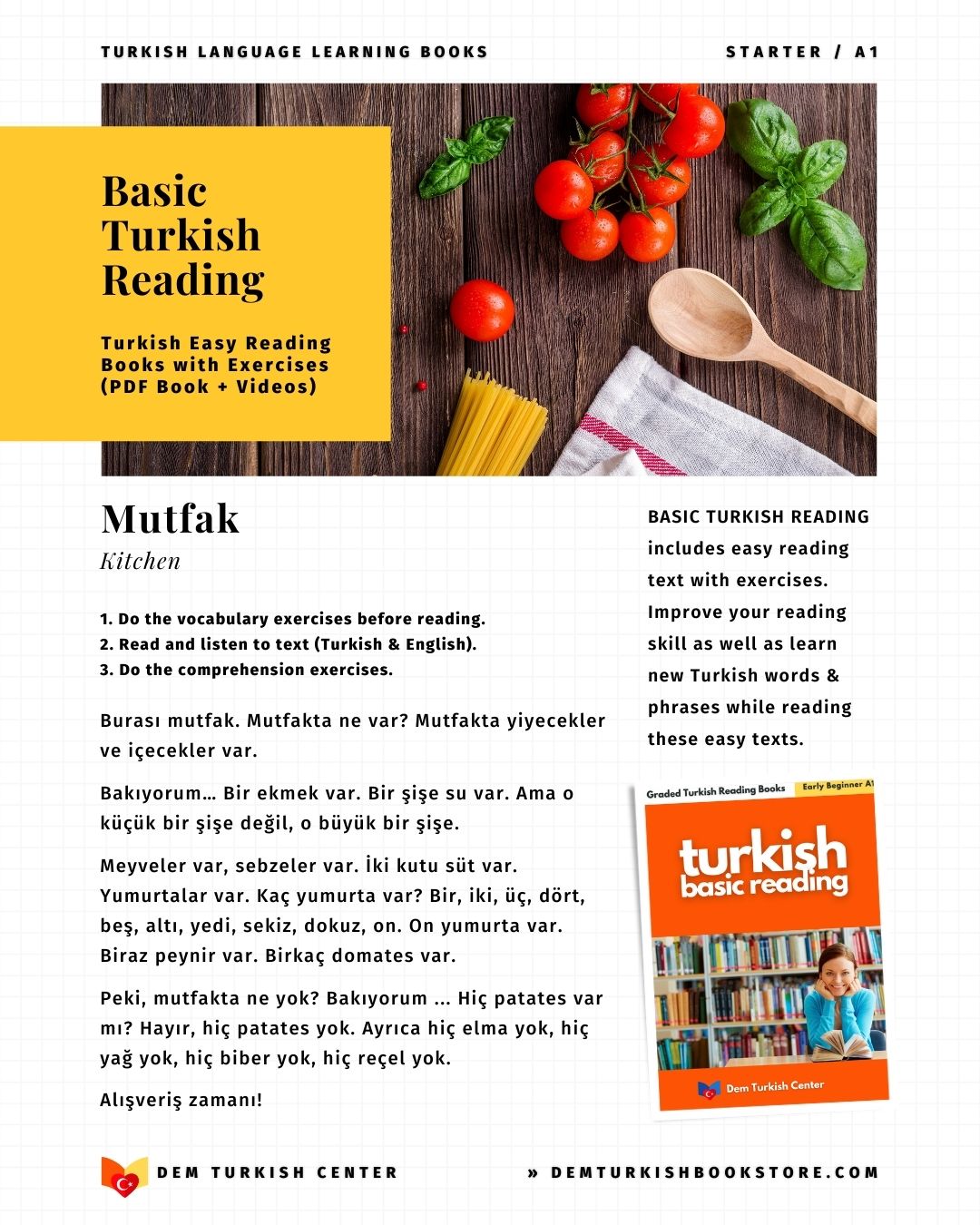
Understanding Turkish Vowel Harmony – A Simple Guide
Turkish vowel harmony is one of the most fundamental rules in the language, making pronunciation and word formation smoother and more consistent. While it may seem tricky at first, mastering this rule will help you conjugate verbs, add suffixes, and speak Turkish more naturally.
In this guide, we’ll break down vowel harmony into simple, easy-to-follow rules with plenty of examples. By the end, you’ll be able to apply it confidently in your Turkish studies!
What Is Turkish Vowel Harmony?
Vowel harmony is a linguistic rule that ensures vowels in a word (or between a word and its suffixes) "harmonize" or match in terms of their sound. Turkish has two main types of vowel harmony:
- Front-Back Harmony (Major Vowel Harmony)
- Rounding Harmony (Minor Vowel Harmony)
Let’s explore each one.
Download Turkish grammar Course 1 A1
1. Front-Back Harmony (Major Vowel Harmony in Turkish)
This rule states that if the last vowel in a word is a front vowel, the suffix must also have a front vowel. If the last vowel is a back vowel, the suffix takes a back vowel.
Turkish Vowels Divided into Two Groups:
- Front Vowels (İnce Ünlüler) e, i, ö, ü
- Back Vowels (Kalın Ünlüler) a, ı, o, u
How It Works:
- If the last vowel is e, i, ö, ü → Suffix uses e or i
- If the last vowel is a, ı, o, u → Suffix uses a or ı
EXAMPLES
- Ev (house) → Ev + -de (in) = Evde (in the house)
- The last vowel in the word "e" is a front vowel → suffix uses -de
- Okul (school) → Okul + -da (in) = Okulda (at school)
- The last vowel in the word "u" is a back vowel → suffix uses -da
- Göz (eye) → Göz + -üm (my) = Gözüm (my eye)
- The last vowel int eh word "ö" is a front vowel → suffix uses -üm
- Kitap (book) → Kitap + -ın (your) = Kitabın (your book)
- The last vowel in the word "a" is a back vowel → suffix uses -ın
2. Rounding Harmony (Minor Vowel Harmony in Turkisg)
This rule is slightly more advanced and applies to suffixes with -i, -ü, -ı, -u. It states that if the last vowel is rounded (o, ö, u, ü), the suffix vowel must also be rounded.
Rule Breakdown:
- If the last vowel is unrounded (a, e, ı, i) → suffix uses -ı or -i
- If the last vowel is rounded (o, ö, u, ü) → suffix uses -u or -ü
EXAMPLES:
- Yol (road) → Yol + -un (your) = Yolun (your road)
- The last vowel in the word "o" is rounded → suffix uses -un
- Gün (day) → Gün + -üm (my) = Günüm (my day)
- The last vowel in the word "ü" is rounded → suffix uses -üm
- Bebek (baby) → Bebek + -i (the) = Bebeği (the baby)
- The last vowel in the word "e" is unrounded → suffix uses -i
- Kedi (cat) → Kedi + -ye (to) = *Kediye (to the cat)
- The last vowel in the word "i is unrounded → suffix uses -ye
Exceptions to Turkish Vowel Harmony
While most Turkish words follow vowel harmony, there are a few exceptions, usually due to:
- Loanwords (e.g., "saat" – "hour," from Arabic)
- Fixed suffixes (e.g., "-ken" – "while," always uses -e)
- Some compound words (e.g., "bugün" – "today")
Why Is Vowel Harmony Important?
- Makes pronunciation easier – Words flow smoothly.
- Helps with verb conjugations & noun cases – You’ll know which suffix to use.
- Sounds more natural – Native speakers use it instinctively.
Final Tips for Mastering Vowel Harmony
- Listen to native speakers – Pay attention to how suffixes change.
- Practice with common words – Start with simple nouns and verbs.
- Don’t stress over exceptions – Learn them gradually.
By understanding and applying vowel harmony, you’ll speak Turkish more accurately and confidently. Keep practicing, and soon it’ll become second nature!














